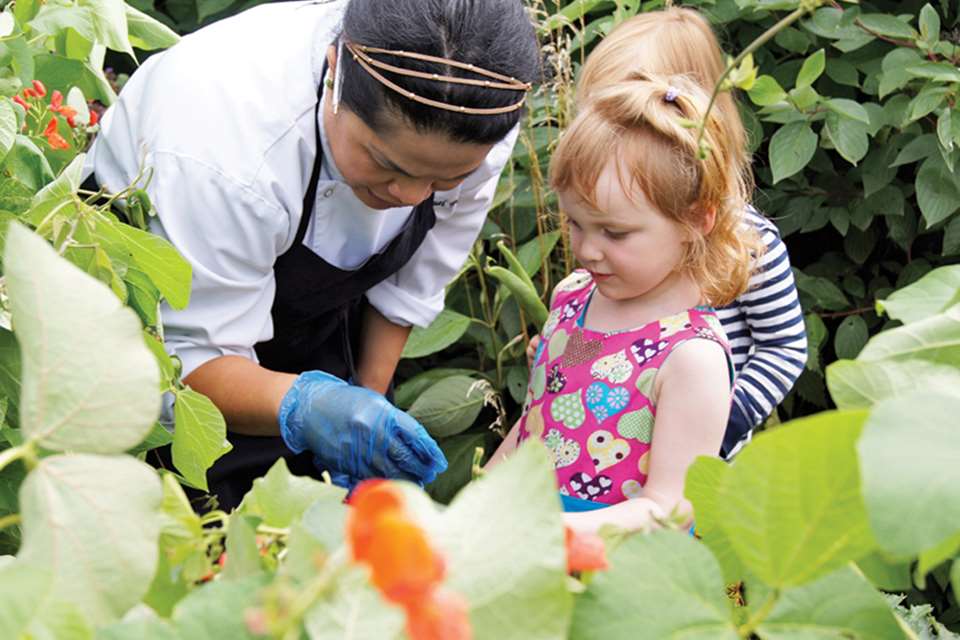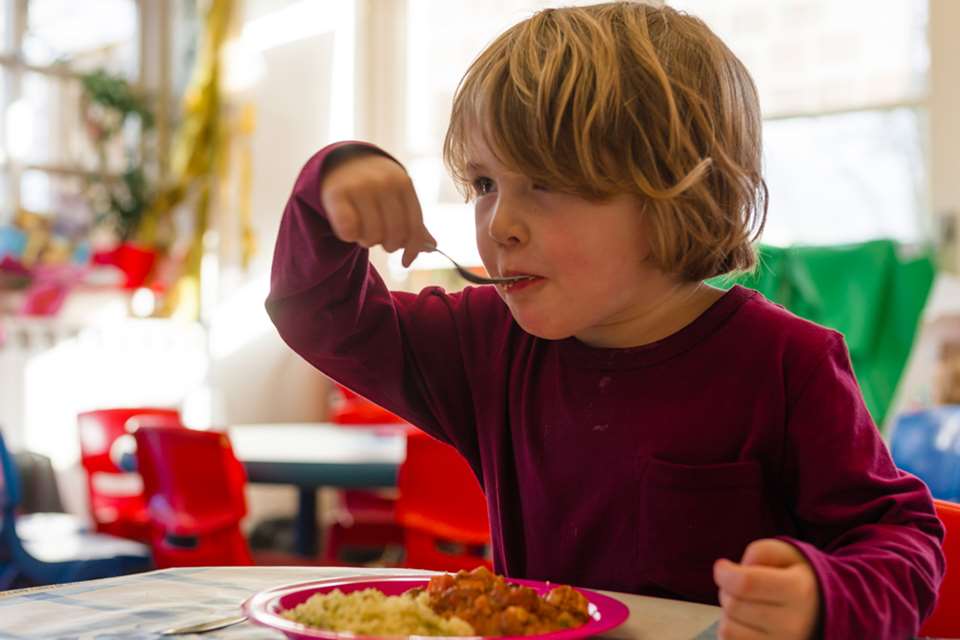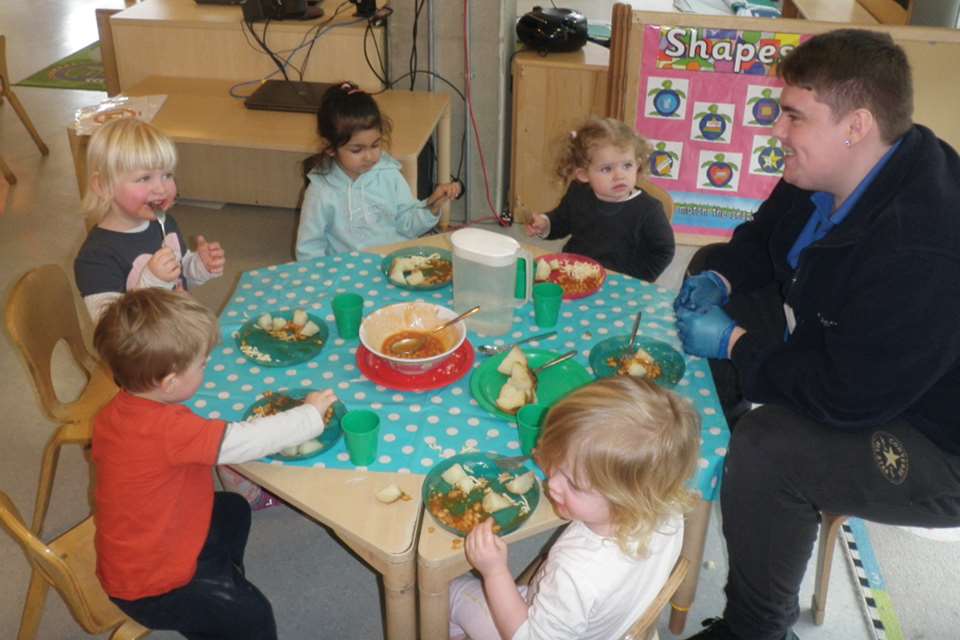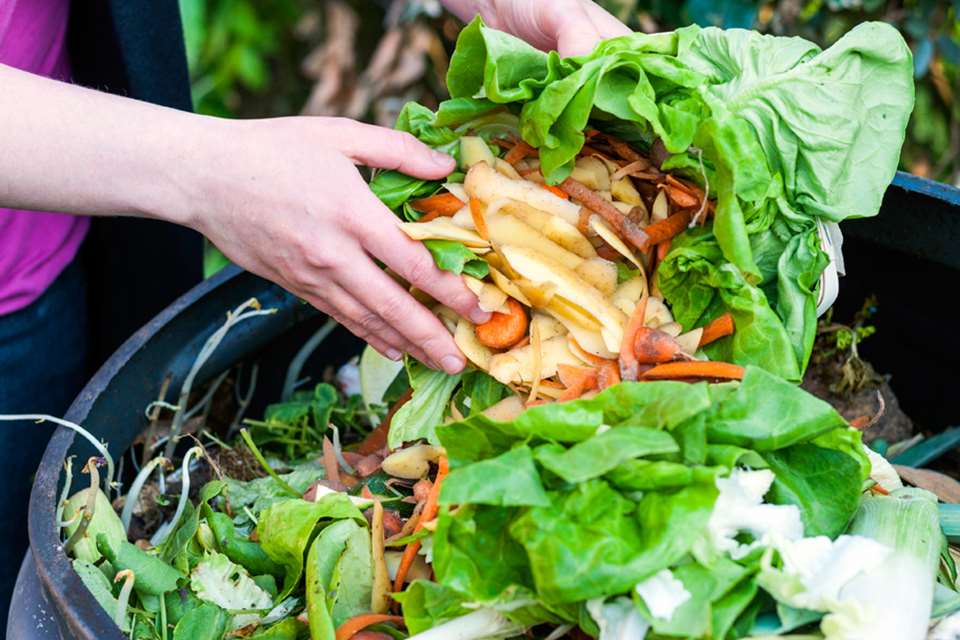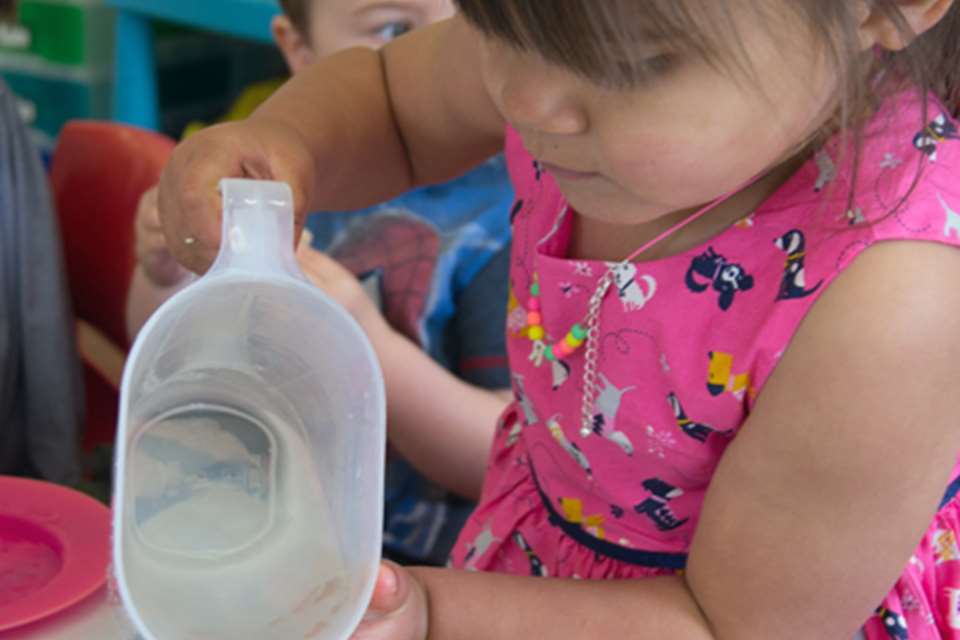A Unique Child: Nutrition - Leave it out
Mary Llewellin
Monday, June 1, 2015
Robust systems and creative cooking can help to cater for those with gluten-free diets, says Mary Llewellin
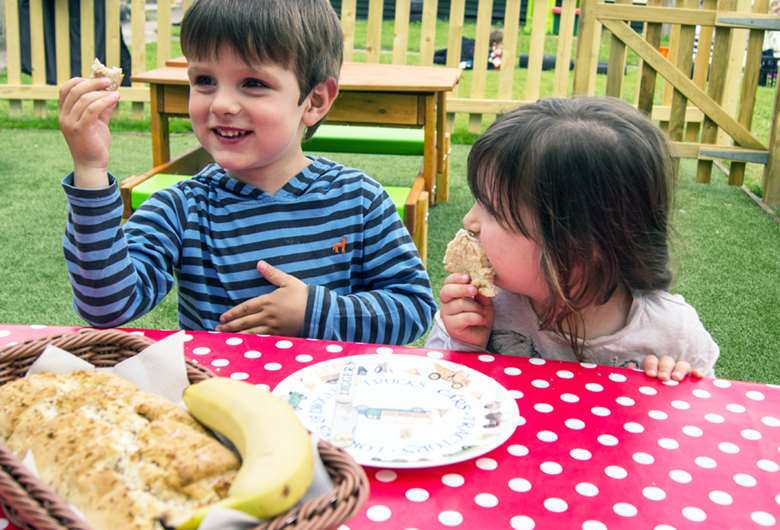
Special dietary requirements in nurseries seem to be on the rise - perhaps in some part as a result of grea- ter nutritional awareness among parents. At Snapdragons, a gluten-free diet is one of the commonest special requirements we encounter.
There are many reasons why people need, or choose, to exclude gluten from their diets, ranging from medically diagnosed coeliac disease and wheat allergy through to less acute wheat or gluten intolerance.
Some parents simply prefer their children not to eat wheat, and therefore gluten, on health grounds as it has been linked to various conditions such as bloating, mood swings and even autism, though the jury is very much out on the truth of these claims.
DIAGNOSIS
Coeliac disease is being diagnosed more frequently than ever before, with about one in every 100 people suffering from it in the UK, but it is not clear if this is due to better diagnosis or an increase in the disease.
It is caused by the body's immune system mistakenly seeing gluten as a threat and attacking it, damaging the delicate, finger-like villi that line the intestine and impairing their ability to absorb nutrients from food. The symptoms are bloating, abdominal pain, diarrhoea, tiredness and ultimately malnutrition. It is not curable, but eliminating gluten from the diet will control the symptoms.
Wheat allergy is also due to an over-zealous immune system, but the body has a different reaction, commonly a rash, asthma or wheezing, eczema, tummy pain and diarrhoea. Sometimes the reaction is not immediate, so it may take time to recognise that the cause is dietary. Children with a wheat allergy often outgrow the condition.
Whatever the reasons, one in five of us now buys gluten-free products, and nurseries need to be confident about offering a gluten-free diet that is inclusive, varied, nutritious and delicious.
What is gluten?
Gluten is a protein in wheat, barley and rye. Many people following a gluten-free diet also exclude oats, which do not contain gluten but a similar protein called avenin.
The main reason for avoiding oats is that they are commonly processed alongside wheat, barley and rye and are often cross-contaminated. Some food producers are responding to demand and processing oats separately, and these will be labelled as gluten-free.
Keep talking
It is vital to have regular reviews with a child's parents or carers because the situation frequently changes. Children often grow out of allergies or, indeed, develop new intolerances and parents can forget to inform the nursery, so keep talking about what is on the menu and which ingredients will need to be substituted.
Ask parents to provide accurate information about foods to be avoided and the precise reasons for this so that you are fully informed of the possible consequences, which can be acute.
Robust systems
From the office to the store cupboard, your systems need to protect both children and staff from the consequences of accidental food contamination.
We use a sticker system in the kitchen at Snapdragons: all the children with special dietary requirements have sheets of stickers with their name and the prohibited foods listed so that their meals are clearly labelled when they leave the kitchen and the staff in the rooms do not muddle them with others.
The new food allergen requirements introduced in 2014 require caterers to list the most common allergens - gluten being one - included in each meal. This is a useful way of keeping evidence should children have adverse reactions to any foods at nursery.
Ideally, products containing wheat should be kept in a separate area so that no cross-contamination occurs, but if space is limited, air-tight containers and careful cleaning are fine. Of course, all kitchen equipment, cutlery, crockery, cloths and surfaces must be thoroughly cleaned between the preparation of normal or gluten-free dishes.
Foods with gluten
Products containing gluten are ubiquitous and it is not always identified as 'wheat'. Sausages, sauces, stock cubes and even lipstick can contain gluten.
Watch out for words like starch, rusk, vegetable protein, filler and binder - the list goes on. Coeliac UK and Allergy UK both provide extensive information on their websites, but if you are unsure look for foods specifically labelled as gluten-free.
How to eat gluten-free
With the growing demand for gluten-free food, there is now a wide range of ready-made products, but these are often higher in fat and sugar than their wheaty equivalents and sometimes look less than enticing.
At Snapdragons we prefer to cook all our meals from scratch and we don't believe that children on special diets should be treated differently. Main meals and puddings are often naturally gluten-free because we use fresh, unprocessed ingredients.
A typical gluten-free meal might be chicken curry with rice, followed by natural yoghurt and fruit compote. Gravies and sauces can be thickened by reduction or with chickpea or corn flour, for instance. Stock cubes can contain gluten but should be avoided anyway due to their high salt content.
Of course, there is a place for baked goods, like biscuits and breads, and there are plenty of naturally gluten-free cereals and grains that can be used instead of wheat, barley and rye.
The only problem is that it is gluten which gives elasticity to flour, allowing bread and cakes to hold pockets of air and rise when cooked. Gluten-free baking is often crumbly and dry and it has a relatively short shelf life. Remember, too, that baking powder contains gluten, so get a gluten-free version or use bicarbonate of soda as a raising agent.
Our chef, Raquel, makes her own bread using Doves organic, gluten-free flour, which is a blend of rice, potato and tapioca flours. Her trick is to add grated fruit or vegetables into the dough before kneading to make a deliciously moist loaf with a little more texture. Favourite ingredients are carrot, beetroot, parsnip or apple, but just experiment.
A gluten-free snack
A lovely gluten-free snack, or breakfast, is a farl, the traditional Irish potato cake. Made with left-over potatoes, it is economical, delicious and versatile.
To make it, warm 225g of mashed potato in a microwave to soften, then combine it with 25g of butter (or rapeseed oil) and 50g of gluten-free flour until it is free of lumps and the dough is firm. Roll out to a circle about 25cm across and cut into eight sections like a pizza. Heat a heavy frying pan with no oil in it until it is hot, then cook the farl for a total of five minutes, turning halfway through.
It is equally good with savoury or sweet companions. Try it with scrambled egg for a more filling meal or maybe a little knob of butter and some seasonal fruit compote.
Mary Llewellin is operations manager for Snapdragons. Snapdragons Keynsham has the Food For Life Partnership Gold Catering Mark, a Children's Food Trust Award, is accredited by the Vegetarian Society and was winner of the Nursery World Nursery Food Award in 2012 and 2014. See www.snapdragonsnursery.com
MORE INFORMATION
Allergy UK, www.allergyuk.org
Coeliac UK, www.coeliac.org.uk
'Spotlight on... wheat-free', BBC Good Food, www.bbcgoodfood.com/howto/guide/spotlight-wheat-free
[asset_library_tag 787,Download the PDF]


